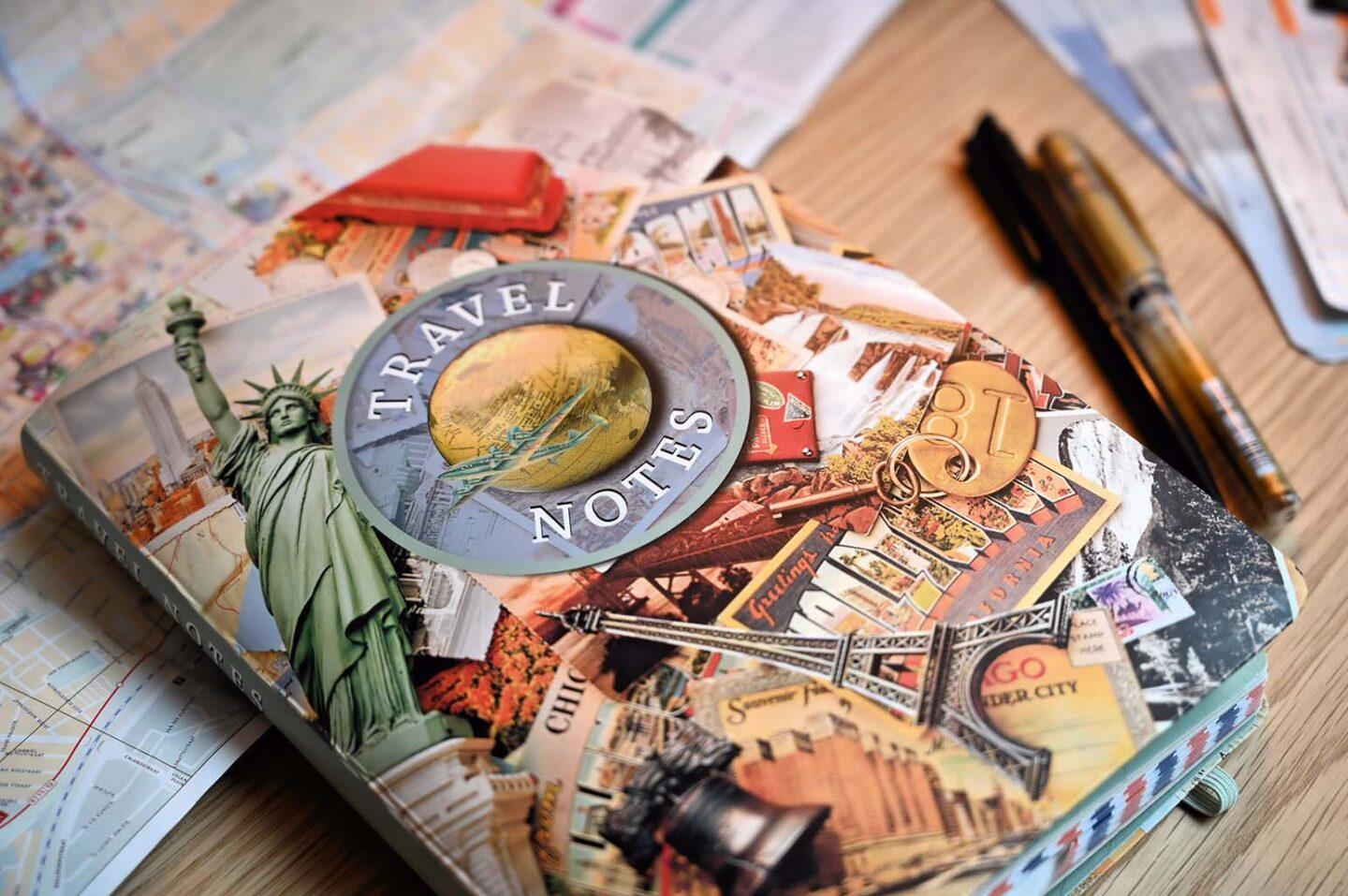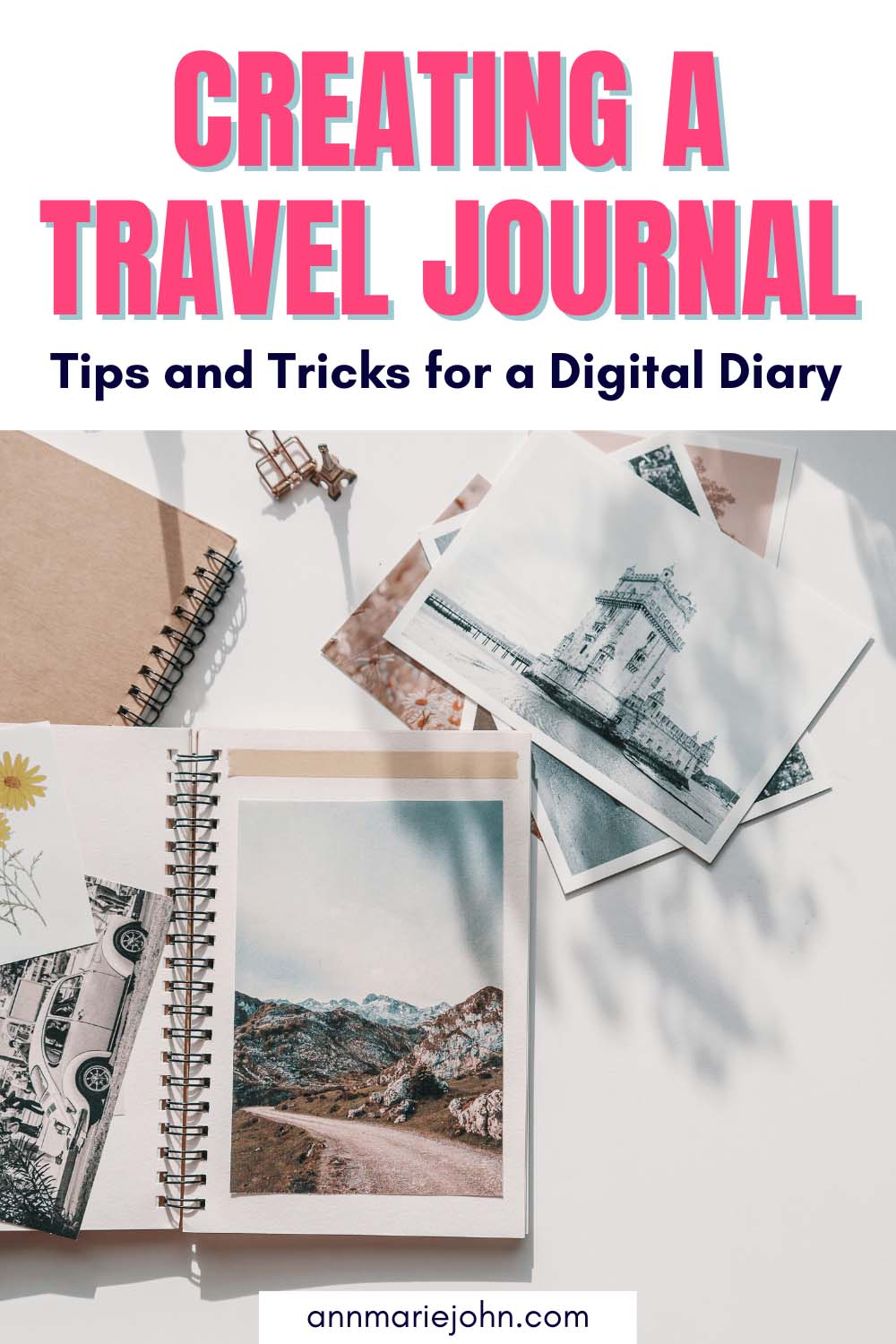Craft your perfect digital travel journal with expert tips. Capture memories effortlessly with our guide to creating a personalized travel diary.

Traveling is a journey that extends beyond physical destinations. It’s about the experiences, the cultures, the unexpected adventures, and the memories that last a lifetime. In the digital era, the concept of documenting these experiences has evolved. A digital travel journal offers a dynamic, immersive way to capture and share your travel stories.
Let’s delve into how you can create a captivating digital diary that encapsulates the essence of your wanderlust.

Why a Digital Travel Journal?
The allure of a digital journal lies in its versatility and reach. Unlike traditional paper diaries, a digital journal allows you to integrate various multimedia elements—photos, videos, and audio clips—making your storytelling more vivid and engaging.
It’s also incredibly convenient; with everything stored digitally, you can write and update your journal on the go. Furthermore, digital journals offer a level of interactivity and sharing capacity that paper journals simply can’t match.
Whether it’s for personal reflection or sharing your journey with the world, a digital journal is a modern, efficient, and eco-friendly choice.
Choosing Your Platform
The heart of your digital journaling journey is finding the right platform. There are numerous apps and websites tailored for digital journaling, each with its own set of features and aesthetics.
Platforms like Day One and Journey offer a straightforward, diary-like experience with cloud syncing, while blogging platforms such as WordPress or Wix provide more customization and the option to share your journey publicly.
Consider what you value most—ease of use, customization, privacy options—and choose a platform that aligns with your journaling goals.
Gathering Your Tools
In the realm of digital journaling, your tools are your best companions. A reliable smartphone or tablet with a good camera is essential for capturing those impromptu moments. For the more photography-inclined, a digital camera can offer higher-quality images to include in your journal.
Don’t forget additional gadgets like a lightweight tripod, a portable microphone for clear audio recordings, or a GoPro for action-packed adventures. Remember, the aim is to capture your experiences as vividly and authentically as possible.
Documenting Your Experiences
What sets a travel journal apart is the personal narrative. It’s more than just listing the places you visit; it’s about capturing your impressions, the people you meet, the food you taste, and the unexpected adventures.
Write about the bustling streets, the serene landscapes, the cacophony of city life, or the tranquil moments. Delve into the heart of each destination, capturing not just the sights but the essence and atmosphere that make each place unique. Share the stories of people you encounter, from a friendly local vendor to a fellow traveler with intriguing tales, adding a rich, human dimension to your narrative.
Your journal is a canvas for your thoughts and experiences, a personal account that brings your travels to life, turning each entry into a vivid snapshot of your journey.
Adding Photos and Videos
Visual elements are the soul of a digital travel journal. They provide a visual context to your stories and help capture the mood and atmosphere of your experiences.
When adding photos and videos, think about composition, lighting, and what you want to convey with each shot. Consider using various angles and perspectives to add depth and interest to your visual storytelling. For videos, a mix of panoramic shots and close-ups can create a dynamic viewing experience.
Remember, each visual should complement your narrative, adding layers of emotion and authenticity. A well-placed photo or a short video clip can transport the viewer to the moment, making them feel like they’re part of your journey and effectively bridging the gap between your experiences and their imagination.
Staying Organized
A well-organized journal is a joy to read and navigate. Chronologically structuring your entries can give a sense of progression to your journey, allowing readers to follow along as if they were journeying with you. Dates and locations as headers can be incredibly helpful in this regard.
Alternatively, you could organize by themes—food, landscapes, city life, etc.—especially if you’re visiting multiple destinations. This thematic approach can be particularly engaging for readers who are more interested in specific aspects of travel. Consistency in your formatting, such as using similar fonts and layouts, gives your journal a cohesive look.
Using the same style for captions, consistent photo sizes, and a uniform colour scheme can also enhance the visual appeal and make your journal look professionally put together, even if it’s just for your personal memory collection.
Interactive Elements
The digital format opens up exciting possibilities for interactivity. Embed maps to mark your travel routes, create photo galleries, or even add links to external resources for more context. These interactive elements can transform your journal from a mere collection of entries to an immersive experience for your readers.
Managing Your Travel Files
For those who wish to compile their journal entries into a comprehensive digital booklet or PDF, managing large file sizes, especially with multimedia elements, can be challenging.
A PDF compressor, like the stress-busting option provided by Smallpdf, is an invaluable tool here. It reduces the file size, making it easier to share via email or online without compromising too much on quality. This way, your beautifully crafted digital journal remains accessible and easy to distribute.
Regular Updates
Consistency is key in journaling. Regular updates not only help you document your experiences in real-time but also maintain a connection with your audience if you’re sharing your journal publicly.
Even if you’re journaling for personal reasons, frequent updates help you reflect on your experiences more deeply and maintain a habit of writing.
Privacy Matters
If your journal is public, be mindful of privacy and safety. Avoid sharing sensitive information, like your current location or personal details. Digital journals often have privacy settings; use them wisely to control who sees your content.
Remember, the internet is a public space, and it’s important to stay safe while sharing your journey.
Backing Up Your Journal
Always back up your digital journal. Loss of data can be heartbreaking, especially when it’s a record of your travels. Regularly back up your entries to cloud services or an external hard drive. This secures your memories and lets you access your journal across different devices.
Personalize Your Journal
Your digital journal is an extension of your personality. Customize it to reflect your style, be it through the use of vibrant colors, artistic fonts, or a particular layout style. Personal touches make your journal uniquely yours and more enjoyable to revisit.
Reflect and Revisit
Your digital travel journal is more than a record; it’s a repository of your growth and experiences.
After your travels, take time to go through your journal. Reflect on your experiences, the lessons learned, and the joys discovered. Over time, it becomes a cherished collection of your life’s adventures, a testament to your explorations.
Creating a digital travel journal is an enriching experience that extends the joy of traveling. It allows you to document your adventures creatively, share your stories, and reflect on your experiences.
In our overtly digital age, a travel journal is not just a diary; it’s a vibrant tapestry of your journey, woven with words, images, and emotions.
